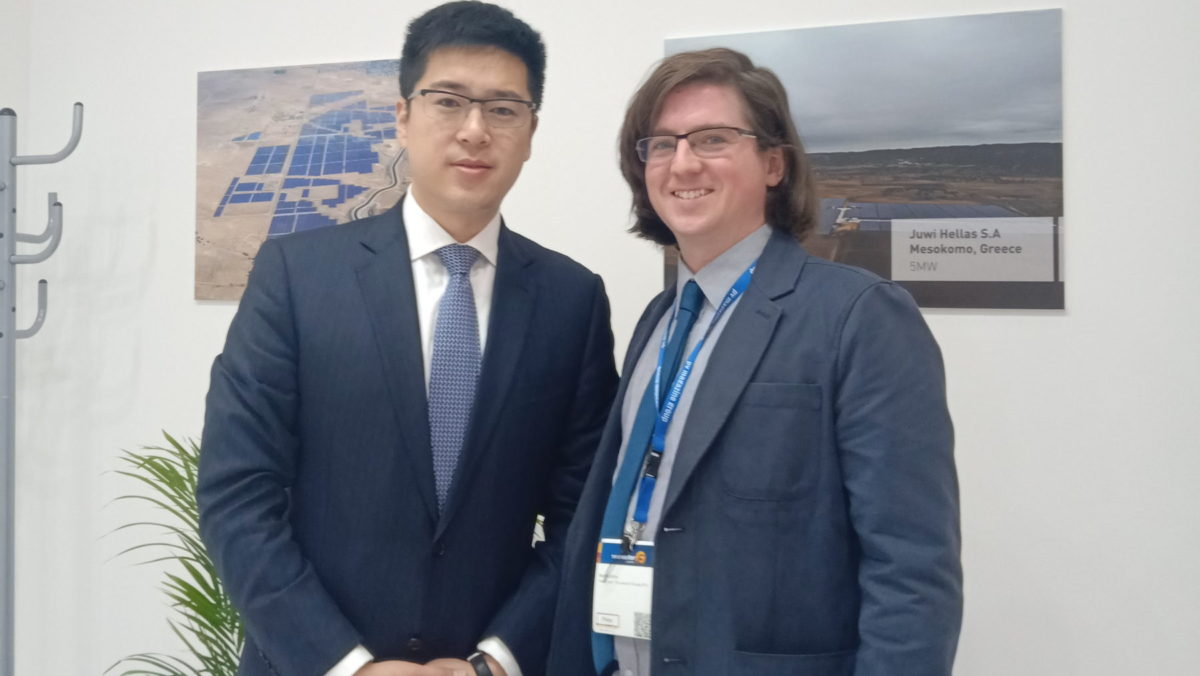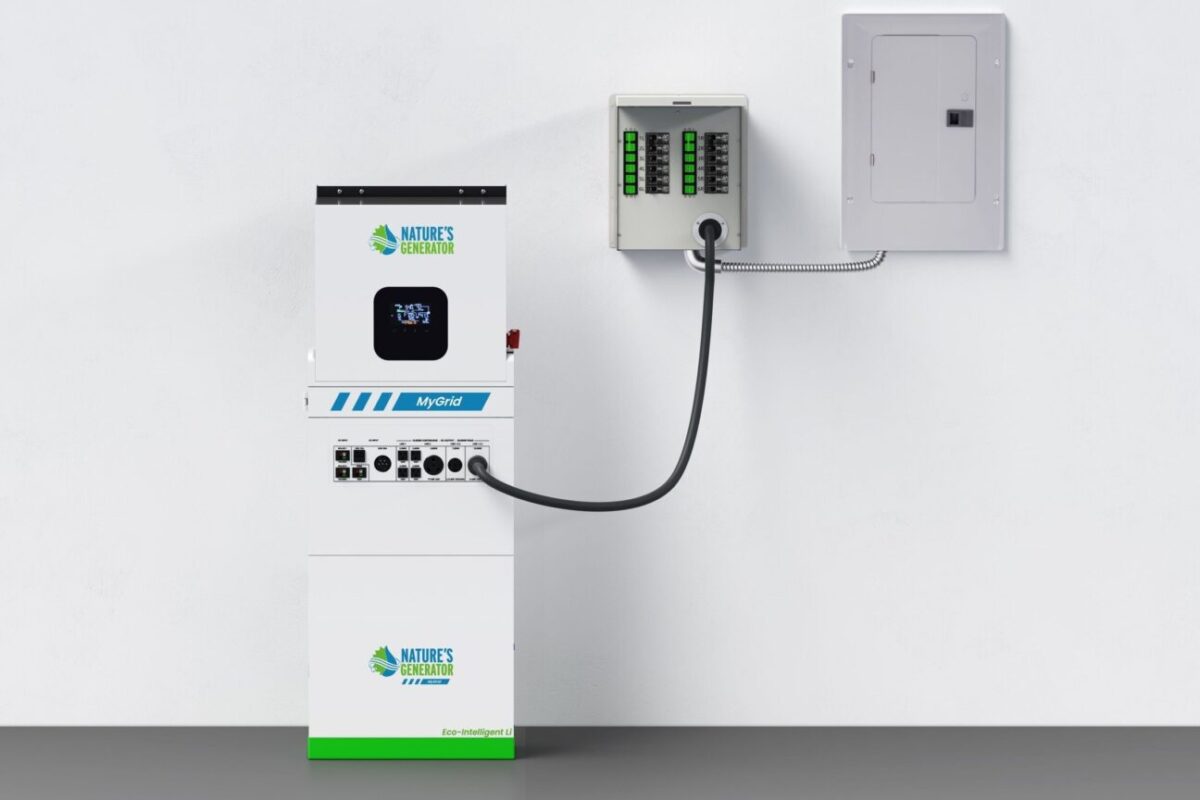pv magazine: To begin, can you give us an overview of the Swan module’s key features?
Gener Miao: It is primarily a bifacial product. This means additional power output per module, shifting the whole industry toward higher yield and lower levelized cost of electricity [LCOE]. Our solution is a very innovative product incorporating the transparent Tedlar backsheet. Compared to glass-glass bifacial products it is much lighter and more friendly to installers and EPCs [engineering, procurement and construction companies], and also in terms of cost it is much more competitive.
That’s why we came up with this new product. We believe that in the long run it will become a very popular one which is easy to install and can replace older monofacial modules with white backsheets.
How does the glass-with-transparent backsheet set-up compare with glass-glass, which has represented the bulk of bifacial production so far?
It’s hard to judge which is better or worse, it really depends on the project site and other factors. From our research point of view, in most cases transparent backsheet generates a better LCOE. But there are certain circumstances, floating solar installations for example, which naturally prefer a glass-glass product. We are not saying no to glass-glass, that is still one of our products. But we are strongly promoting the advantages of our glass-transparent backsheet module.
Are there regions or project types the Swan module is especially well suited to?
Regions taking the Swan series as a priority are those with high labor costs, where glass-glass modules are too heavy, and clamping etc. adds more complexity and therefore more cost for the installer. They have a strong motivation to work with the Swan series modules.
We already have, I think, three cases closed with customer orders. That’s very exciting for us and we get tons of inquiries about this module. The first question they ask is, ‘when can you deliver?’ We feel there is strong interest from the demand side.
And how big is the initial roll-out of the Swan series, what proportion of Jinko’s production capacity will be devoted to producing this module?
Technically speaking, we can manufacture the Swan module with all of the production capacity that we have – almost 17 GW. You just need to replace the typical white backsheet with a transparent one. There is no problem at all with capacity, this is part of why we think it’s a great product.
While bifacial is clearly an important technological shift for the whole industry, it seems it is still held back by complications with modelling performance. What is JinkoSolar doing to resolve this?
The industry is still lacking a universal standard. There is no standard to say how they measure the rear-side output, or how to test the front and rear-side output together. From our point of view, what we are doing is promoting and pushing the IEC [International Electrotechnical Commission] to implement new standards that confirm to the industry how to verify, how to calculate as an international standard.
And before these standards are implemented we aim for our supply to be really tailor made for every customer. We help them, we recommend inverters and trackers together with EPCs and installation methods to give the customer a clear idea of how to optimize the array to get the best LCOE possible.
And how do you see standards developing for bifacial?
The trend is to add the back side and the front side together. The way to monitor at the device level is how much electricity is being generated, no matter whether it is from the front side or the back side. We are measuring the full module output. That’s the way I think the industry is moving.
The Swan module also utilizes a slightly larger wafer than earlier modules, at 158.75mm. What advantages does this bring?
We have done our homework on this and we think we understand that this is the right size for the industry at the moment. With wafers, it’s not only a case of ‘the bigger the better’, it’s really the right size for everyone. Not only for manufacturers trying to sell more power output per unit but also for the downstream industry. The size of the module will also influence the cost of the tracker or racking system and you have to think about installation: the larger the module is, the higher the chance of cracks appearing.
So we have to optimize everything. And after a lot of research we have decided this is the right size. We have a new industry standard right now; all the Tier 1 suppliers are going with the size. From the manufacturing point of view it is not difficult to make. And when it comes to installation the module is just one or two centimeters longer at most, and that’s it, it doesn’t create additional requirements anywhere.
With even larger sizes we have done the research and this would create a lot of disruption. You would have to design a whole new racking system. As a manufacturer we can do larger wafers but I don’t think the downstream sector is ready for it.
Do you expect wafer sizes to go even larger in the future then?
From the manufacturing side we can do that. It is possible. But from a customer-oriented perspective, personally I don’t believe it will happen. It takes a long time to verify the right size and we believe that right now our size is the right one. In another three-and-a-half years 166mm or even a larger size could be okay, but currently for installation standards, tracker/racking providers, I think we have defined the best-fitting size not only for module manufacturers but for everyone in the industry.
Where in Europe do you see the biggest opportunities for Jinko right now?
From our point of view, Europe is the origin of the solar industry. Because of trade tariffs and other issues we saw the market here slow down a little in the past several years. But now it is moving very fast.
But the solar business started in Europe and European companies have the knowhow. Now solar energy costs are low enough that there are a lot of grid parity project opportunities in Europe that we see moving very quickly. And beyond that, European companies and our European partners can export their expertise globally. We see a lot of Europeans doing business in Latin America, Africa, the Middle East and more. So it is a critical region for us.
What do you expect to see from China for the rest of 2019?
Our understanding is that the Chinese government still wants a strong market for solar. New policy has been a little bit later than expected, that’s why we say the China market may come down a little bit from 2018. People are saying now the annual installations number will be around 40 GW, compared with 45 GW in 2018.
And in the rest of the world, which are the key markets for JinkoSolar?
Last year we shipped to more than 100 countries. So really, it’s any place in the world that needs solar power. We take every country, every region as important. For sure we have some limits on resources we can allocate but we are happy to serve every region and every country.
This content is protected by copyright and may not be reused. If you want to cooperate with us and would like to reuse some of our content, please contact: editors@pv-magazine.com.




By submitting this form you agree to pv magazine using your data for the purposes of publishing your comment.
Your personal data will only be disclosed or otherwise transmitted to third parties for the purposes of spam filtering or if this is necessary for technical maintenance of the website. Any other transfer to third parties will not take place unless this is justified on the basis of applicable data protection regulations or if pv magazine is legally obliged to do so.
You may revoke this consent at any time with effect for the future, in which case your personal data will be deleted immediately. Otherwise, your data will be deleted if pv magazine has processed your request or the purpose of data storage is fulfilled.
Further information on data privacy can be found in our Data Protection Policy.